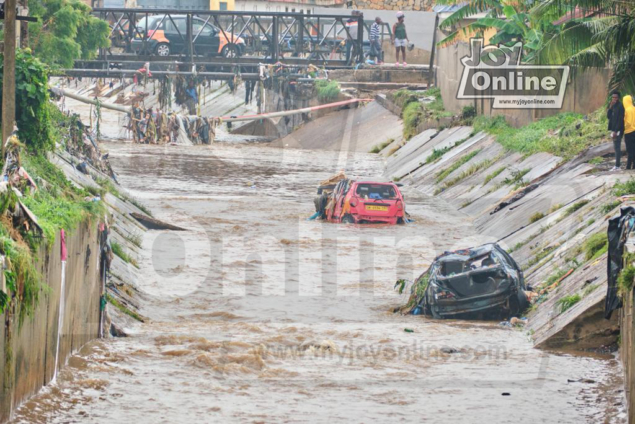The World Bank Group in collaboration with the National Disaster Management Organisation (NADMO), National Development Planning Commission (NDPC) and other major stakeholders held a stakeholders consultation workshop towards the development of a national social protection shock response strategy to show the importance of shock response strategies in Ghana.
According to them, Ghana is rated “high” (the highest level on a four-point scale) for several climate-related shocks, including extreme heat; water scarcity; and urban, river and coastal flooding.
These were accounted to be some of the major risk factors in the country.
Estimates by the United Nations Office for Disaster Risk Reduction and CIMA Research Foundation indicated that, on average, floods in Ghana adversely affect 45,000 individuals annually accounting for 0.16 per cent of the country’s population, thus, reducing annual national Gross Domestic Product (GDP) by 0.23 per cent.
Also on average, drought in the country adversely affects 3.5 million individuals annually indicating 13 per cent of the population and reduces annual inflation by 15 per cent.
The accumulated effect of both flood and drought is a 15.23 per cent reduction in GDP and affects some 3,545,000 individuals annually representing some 13.16 per cent of the population.
The workshop focused on examining; the spatial distribution of drought and flood risk in Ghana, the association between the distribution of these risks and the distribution of the country’s population and poverty levels across districts to determine which region requires what social safety plan, and finally the association between the distribution of the risk and the distribution of social safety net programs participation levels across districts in the country.
The World Bank Group also discovered that both drought and flood risks are determined as increasing functions of “hazard” and “vulnerability” and decreasing functions of “capacity”.
That is, as “hazard” and “vulnerability” rise, floods and drought also rise likewise a fall in “capacity” leads to a fall in both floods and drought.
Hazard, according to them, is the probability of occurrence of a climatic shock, vulnerability is the potential impact of climatic shock as determined by land use and population density, and capacity is the institutional and organisational strength to respond to the shock.
Latest Stories
-
Joy FM listeners criticise Achiase Commanding Officer’s election comment
7 mins -
Legal Aid Commission employees threaten strike over poor working conditions
10 mins -
Ghana ranked 7th globally as biggest beneficiary of World Bank funding
19 mins -
IMF board to disburse $360m to Ghana in December after third review
24 mins -
Former Bono Regional NPP organiser donates 13 motorbikes to 12 constituencies
30 mins -
Securities industry: Assets under management estimated at GH¢81.7bn in quarter 3, 2024
35 mins -
Gold Fields Ghana Foundation challenges graduates to maximise benefits of community apprenticeship programme
2 hours -
GBC accuses Deputy Information Minister Sylvester Tetteh of demolishing its bungalow illegally
2 hours -
Boost for education as government commissions 80 projects
2 hours -
NAPO commissions library to honour Atta-Mills’ memory
3 hours -
OmniBSIC Bank champions health and wellness with thriving community walk
3 hours -
Kora Wearables unveils Neo: The Ultimate Smartwatch for Ghana’s tech-savvy and health-conscious users
3 hours -
NDC supports Dampare’s ‘no guns at polling stations’ directive
3 hours -
Police officer interdicted after video of assault goes viral
3 hours -
KNUST’s Prof. Reginald Annan named first African recipient of World Cancer Research Fund
3 hours

